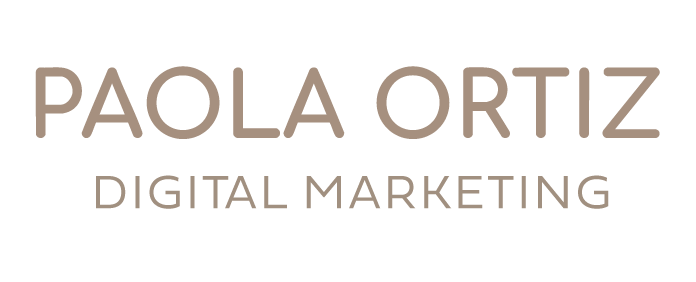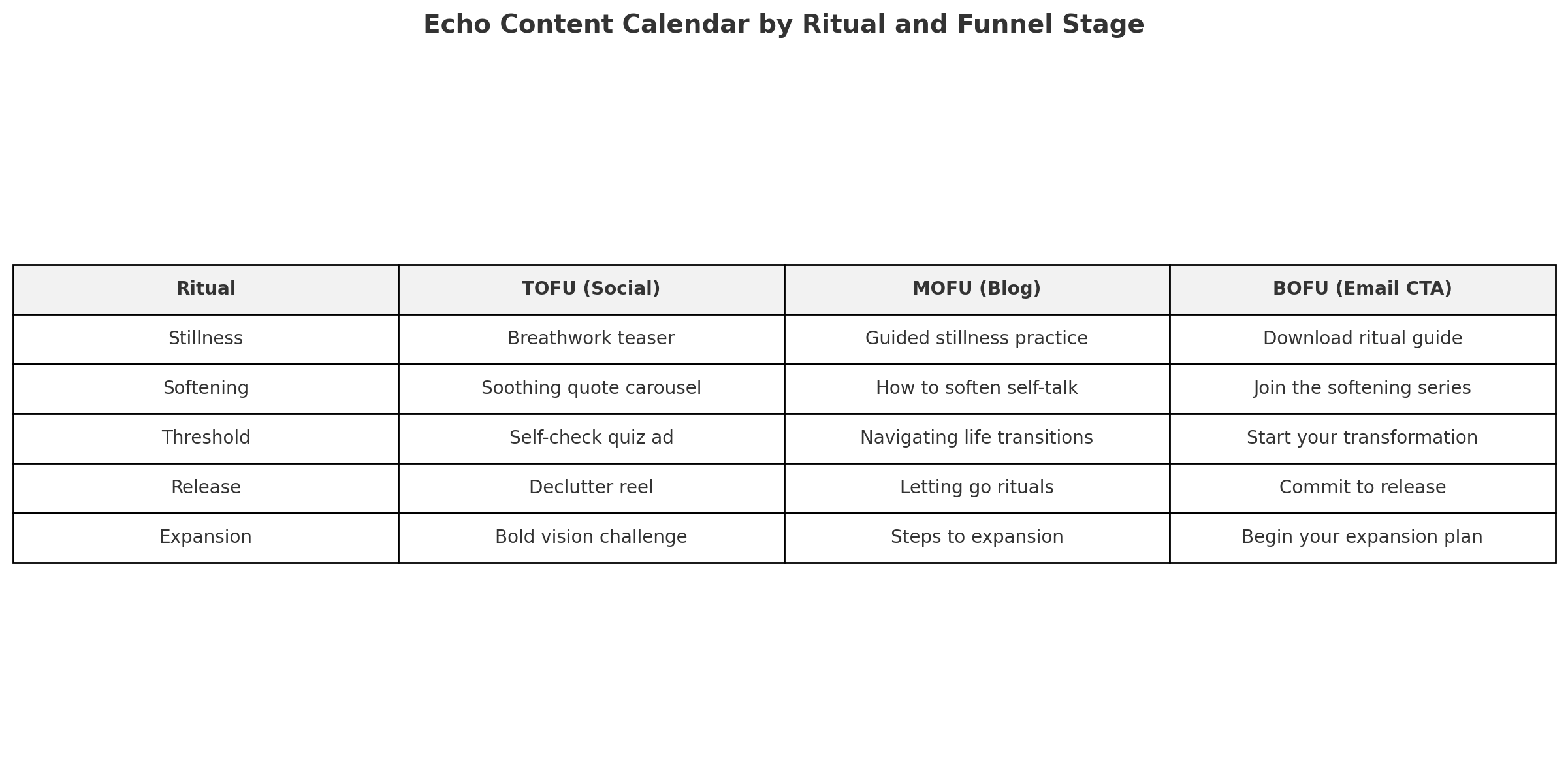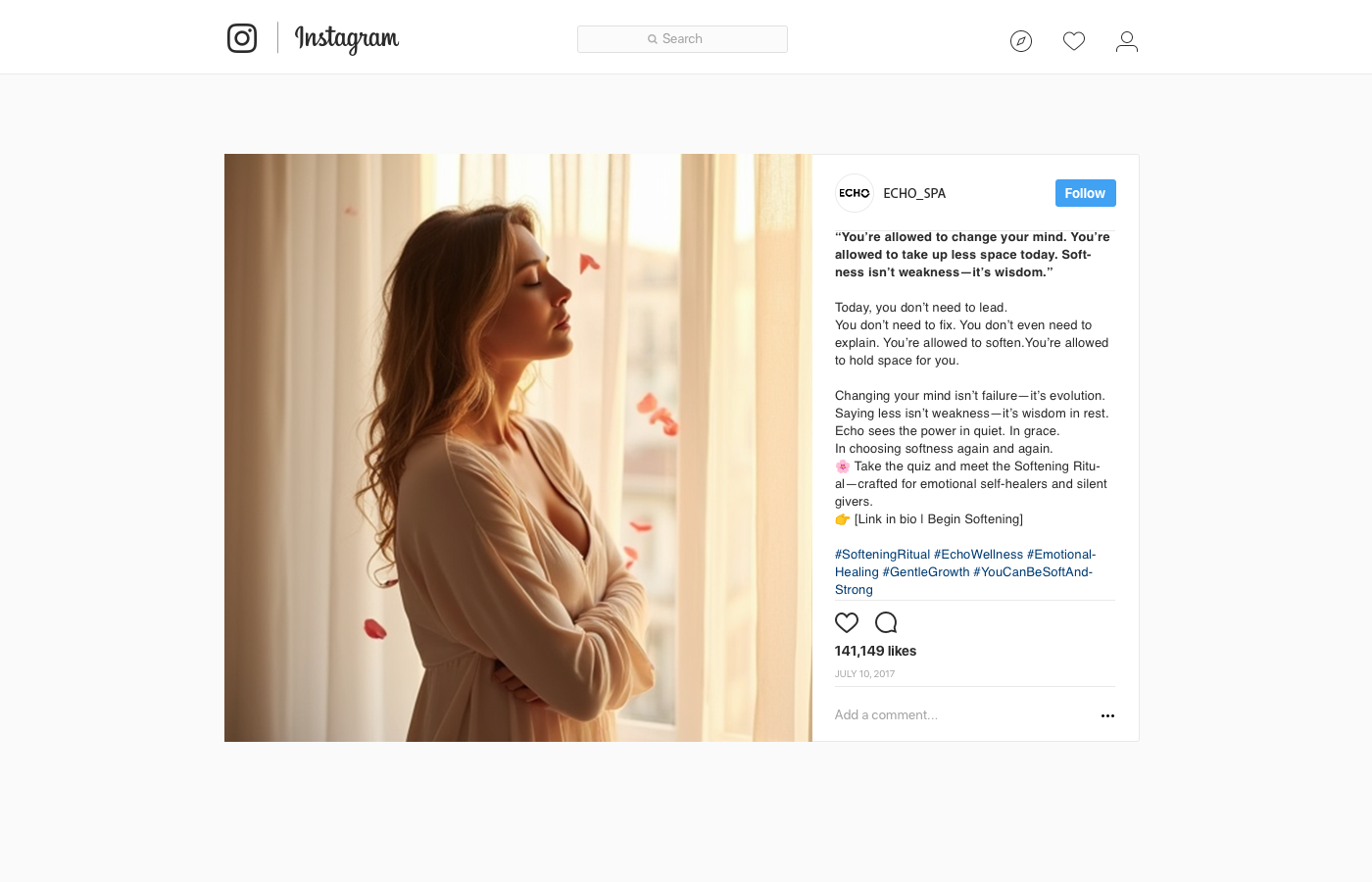How can a wellness brand transform emotional intention into measurable engagement without compromising authenticity?
The Challenge
Echo needed to build trust with emotionally, aware users by offering personalized experiences that felt meaningful, not automated.
The goal was to convert emotional resonance into strategic lead generation and ritual-based nurturing.
The Strategy
I built a segmented inbound funnel driven by user insights collected through a logic-based quiz. Each result mapped directly to a specific ritual, aligned with a funnel stage (from awareness to conversion).
The strategy focused on clear user paths: generate leads via the quiz, nurture through automated email flows, and convert with ritual-aligned content across blog and social. Every touchpoint was tied to measurable funnel objectives.
Segmentation Funnel
A quiz identified users’ emotional needs and sorted them into personalized funnel stages based on how they feel, not just what they do.
Content Alignment
Blog and social posts mapped to funnel stages, ensuring consistent messaging across touchpoints.
Email Personalization
Each ritual triggered its own email flow. The content spoke to the user’s emotional state, offering support instead of pressure.
Channel Planning
Built a content calendar that matched each ritual with the right format, platform, and funnel phase. Everything had a place and a purpose.
Execution
I started with a question: What if your emotional state could guide your digital experience?
That’s where the quiz came in (five branches, each built to mirror a real emotional threshold). But this wasn’t just a quiz for leads. It was a segmentation engine, built to define who the user was and what kind of guidance they actually needed.
From there, I moved them into email flows (one for each ritual. Stillness, Softening, Threshold, Release, Expansion.) Each flow delivered five emails, written to guide the user across the funnel: from awareness to action. No recycled content. No generic automations. Just intentional messaging, aligned to the emotional logic that brought them to echo.
But email wasn’t the only channel in play. A full content plan was developed where blog, social, and newsletter worked in sync. Top-funnel social introduced Echo and pushed users to the quiz. Mid-funnel blog posts aligned with each ritual, building trust and context. Every post had a purpose. Every CTA was placed with intention.
At the core, Echo wasn’t trying to shout louder, it was listening better. The landing page was clear, the CTAs were direct, and each blog guided users toward a ritual recommendation they already felt was theirs.
Key Findings
• Users responded more to emotional alignment CTA’s than to product or offer-based messaging
• Mapping rituals to funnel stages simplified planning across all channels
• Personalized email flows improved message relevance and potential for conversion
• Consistency across blog, email, and social created a seamless brand experience
Conclusion
Echo proved that emotional insight can be operationalized into a strategic funnel. It was a structured inbound system powered by user behavior, content alignment, and automation. Every piece from quiz to email to blog was built to move with purpose, and the result was a full inbound strategy that generated leads from emotions.












